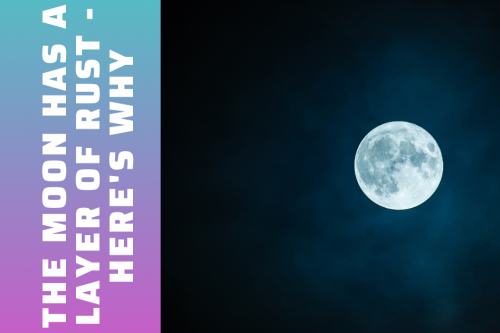The moon has rust on it - why experts are blaming Earth
Reading Time:
1 minute, 28 seconds
The moon has rust on it - why experts are blaming Earth
Jumping Trout, LLC

(CNET 2020) Having rust on the moon is weird, but not totally unexplainable. Still, it shouldn't be happening.
Rust, an iron oxide, needs both oxygen and water to occur naturally, so why does the moon - a space body that's dry and has no oxygen - have rust? Scientists are trying to figure out why.
A study from Science Advances took data from Indian Space Research Organization's Chandrayaan-1 orbiter and discovered that the rock at the moon's poles had a different composition compared to other areas. Shuai Li, the lead author on the study, discovered hematite, a common iron oxide, which is essentially rust. He then reached out to NASA to confirm the find.
So, water does exist on the moon in small quantities. Ice water exists in lunar craters on the far side of the moon, far from where the rust occured. The current theory is that dust particles that often hit the moon are helping release water molecules, mixing those water molecules with iron on the surface.
The existing water mixes with oxygen from the Earth, since it's in such close proximity. Li found that the side of the moon thath faces Earth has more rust than the areas that don't face Earth, which seems pretty self explanatory, but still, never though rust on the moon would be a problem we needed to worry about.
Technically, we're not worried - NASA is worried. This process has most likely been happening over millions of years. We don't know how this will affect the moon or our atmosphere, but let us apologize to the moon for it's unsightly new coating of rust.
Source: https://www.cnet.com/news/the-moon-is-rusting-and-earth-is-to-blame/
Rust, an iron oxide, needs both oxygen and water to occur naturally, so why does the moon - a space body that's dry and has no oxygen - have rust? Scientists are trying to figure out why.
A study from Science Advances took data from Indian Space Research Organization's Chandrayaan-1 orbiter and discovered that the rock at the moon's poles had a different composition compared to other areas. Shuai Li, the lead author on the study, discovered hematite, a common iron oxide, which is essentially rust. He then reached out to NASA to confirm the find.
So, water does exist on the moon in small quantities. Ice water exists in lunar craters on the far side of the moon, far from where the rust occured. The current theory is that dust particles that often hit the moon are helping release water molecules, mixing those water molecules with iron on the surface.
The existing water mixes with oxygen from the Earth, since it's in such close proximity. Li found that the side of the moon thath faces Earth has more rust than the areas that don't face Earth, which seems pretty self explanatory, but still, never though rust on the moon would be a problem we needed to worry about.
Technically, we're not worried - NASA is worried. This process has most likely been happening over millions of years. We don't know how this will affect the moon or our atmosphere, but let us apologize to the moon for it's unsightly new coating of rust.
Source: https://www.cnet.com/news/the-moon-is-rusting-and-earth-is-to-blame/
Posted In:

